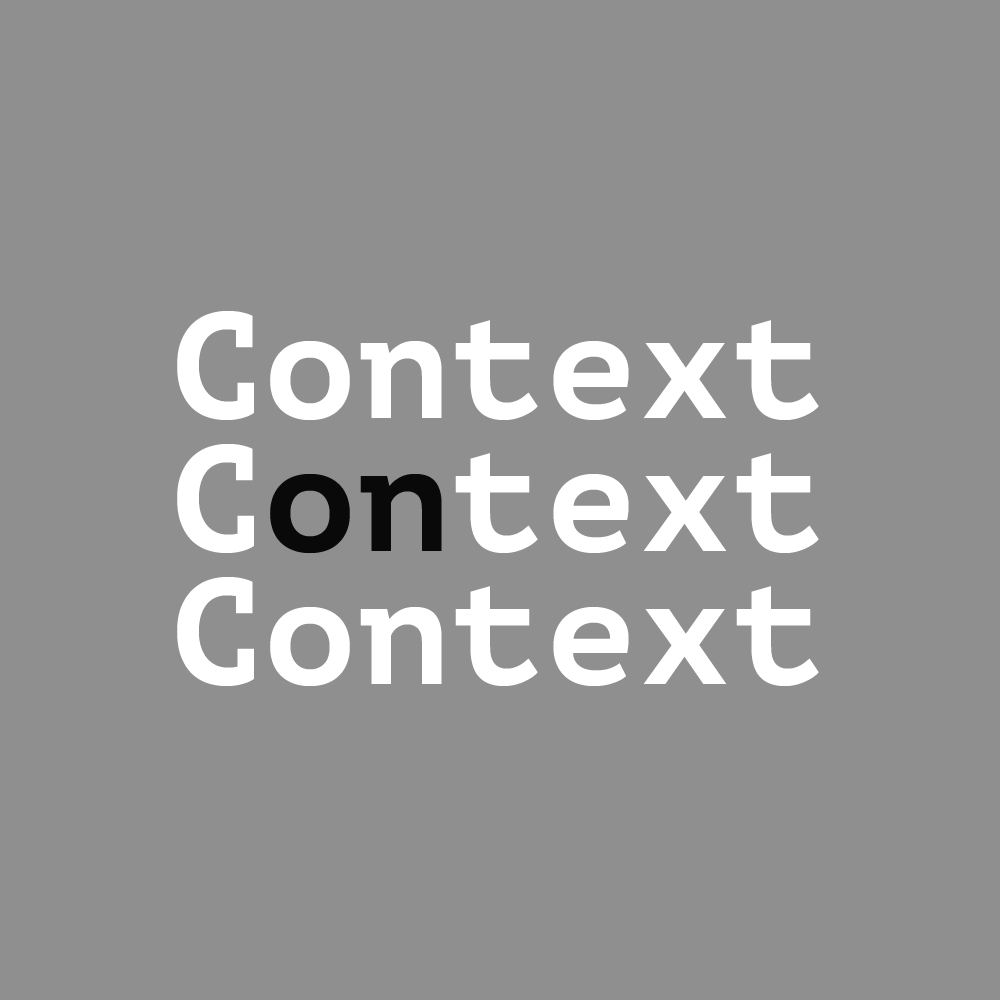On Context
Editor’s Note: Last month, we invited Prof. Morgan to write a short piece on the concept of context. We hope that the ideas below serve a way to start our conversation on context, as well as religion, materiality, and diversity, aimed at creating dialog with a global audience.
Citation: Morgan, David. “On Context.” The Jugaad Project, 1 Sept. 2019, thejugaadproject.pub/on-context [date of access]
According to the online dictionary Lexico.com, the definition of ‘context’ is “the circumstances that form the setting for an event, statement, or idea, and in terms of which it can be fully understood and accessed.”* The text of an utterance, inscription, action, or event comes with a circumstance, that which stands around it and to which the text corresponds. If we are focused on the text itself, context is the silent or unseen frame that supports the text. Taken out of context, a remark can be made to stand on its head, to mean something altogether different from what its original situation prescribes. Context is what was there before the text and serves to anchor it so that it does not slip away and become a floating signifier that can be heard to say anything one wants to supply as a new context or setting. The text came to be by virtue of the setting that preceded it. Therefore, context pre-scribes how the text should be read. It is a constraint on interpretation.
For this reason, the context of a thing is not neatly separable from the thing, otherwise we would not need to attend to context so carefully in accounting for things. The fact is, things need their contexts in order to mean what they do in that context. An archaeologist finds a shard of pottery and asks, what is this thing extracted from layers of dirt? As a fragment of pottery from a moment in time, its meaning depends greatly on where it was found—in a bedroom, then a container of unguent; in a kitchen, then a container of cooking substance or food; at a shrine, then a container of oil or wine for libation; in an atrium, then possibly a work of fine craftsmanship on display. The composition and structure of the shard itself will tell us something, but its location is critical for situating the item in its context.
“The question of context goes to the interpretation of a thing at a particular moment in its existence. ”
Artifacts also transcend any given context. The ceramic vessel may have been made or purchased for use in kitchens, but was re-purposed by a pilgrim in need of oil for use at a shrine. After it is excavated by archaeologists, the object becomes a different sort of object—a rare historical document to be displayed in museums and engulfed in an aura of authenticity and uniqueness. The question of context goes to the interpretation of a thing at a particular moment in its existence. Contexts change and the meaning of things along with them. Things change too, but they are things before they are enwrapped in a context, at which point they become objects, that is, anchored to purpose and performance within discrete parameters. If I do not know what an artifact is, I ask, ‘what is this thing?’ Thingness means its purpose, use, value remain veiled or unclear. Once I can specify what the thing does, what it is for, I situate it within a context that prescribes its meaning in terms of determining its purpose. Specification—assigning it to a species, a class or taxonomy—is a kind of revelation, but also an eclipse of potency. That is because everything is always more than we take it to be since it exists over time, before us and after us. The opposite, we might call it ‘occultation,’ occurs when an object falls out of context and returns to a state of thingness. A mysteriousness arises about it as we wonder what it is.
“The task of scholarly study is to re-situate artifacts within the settings that we find underlie their interpretation. ”
In the study of material religion, attending to the context of an artifact means anchoring it to the time and place, the people, the problem or crisis, the economic or political conditions that gave it ‘berth,’ that is, a particular place to be, to work toward certain ends. Artifacts do not carry their meanings within themselves, though they may bear the traces of their contexts, of the settings from which time, history, and events have withdrawn them. The task of scholarly study is to re-situate artifacts within the settings that we find underlie their interpretation. That may be the original circumstances that contributed to the origin and purpose of the artifact; or it may be the circumstances that followed in subsequent chapters in its cultural biography. Artifacts, after all, don’t stop generating meanings when they leave their original situation. Contexts change. Scholars must therefore re-construct the settings in which artifacts have subsequently performed since they are a kind of stage on which to view the artifact as it once existed.
*https://www.lexico.com/en/definition/context






